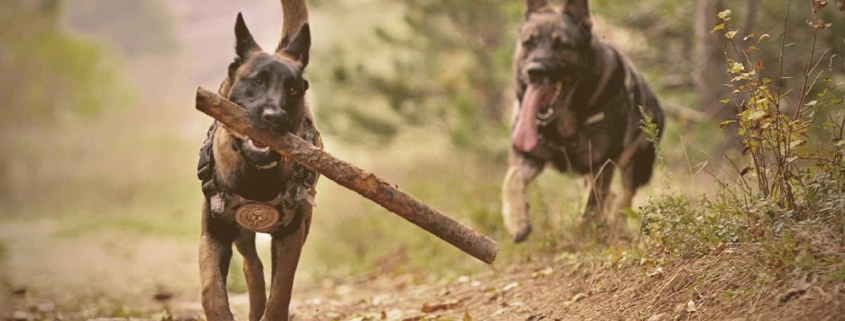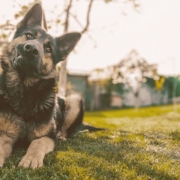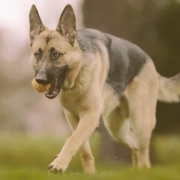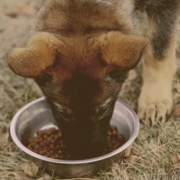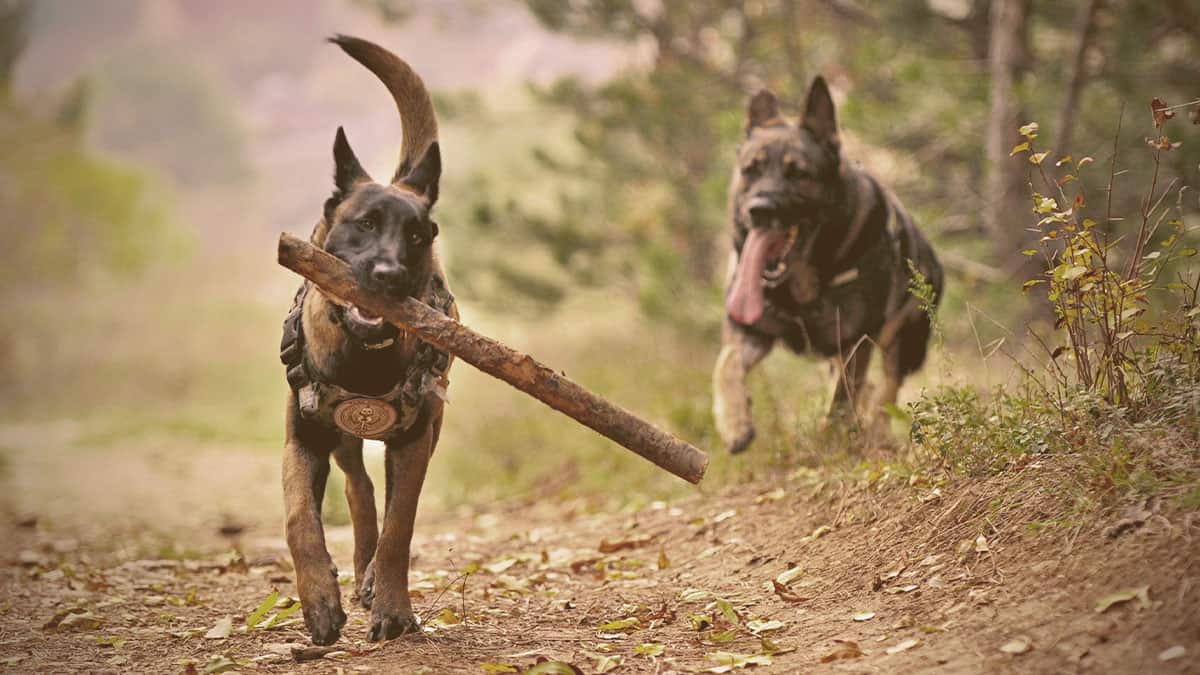
German Shepherd Bite Force: Everything You Need To Know
Alex Vicente • Updated on August 1, 2023
- This review contains affiliate links. Read more here.
- Not a substitute for professional veterinary help.
Everyone loves dogs’ playful biting. Most dogs, on the other hand, can bite very hard.
The more forceful the bite, the more it can cause harm.
The bite force is measured in PSI. The greater the PSI, the stronger the strength.
Kangal dogs have the strongest bite force, measuring at 734 PSI.
But, what is the German Shepherd bite force?
The bite force is substantially less than that of a Kangal. German Shepherds have a bite force of 238 PSI, which can break human bones with a single bite.
In this article, we’ll dive into more details on the German Shepherd’s bite force.
Additionally, we’ll discuss how to avoid the dog’s bite.
Table of Contents
How Strong Is a German Shepherd’s Bite?
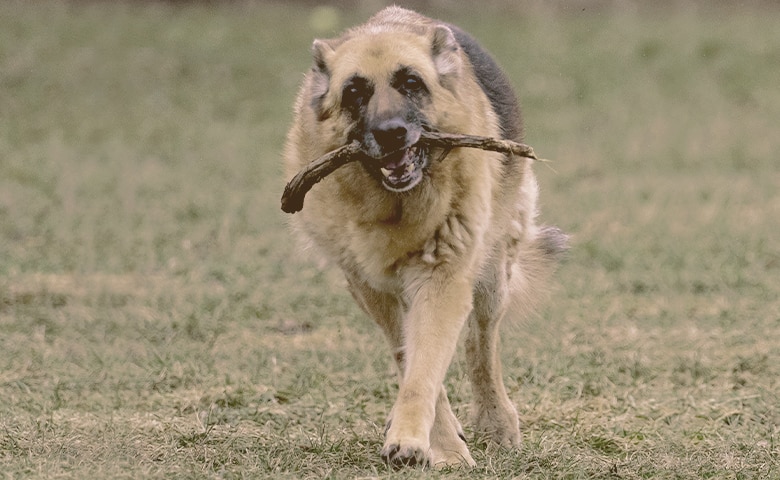
German Shepherds are large dogs that can appear intimidating at times.
They can only be territorial and aggressive if the owners raise them to be such.
Hence, many people use German Shepherds as guard dogs.
German Shepherd dog bites can be serious due to their high force of up to 238 PSI.
The German Shepherd ranks #17 for the strongest bite among 22 other dog breeds.
The German Shepherd surpassed the American Pit Bull Terrier, which has 235 PSI.
What Is a Bite Force?
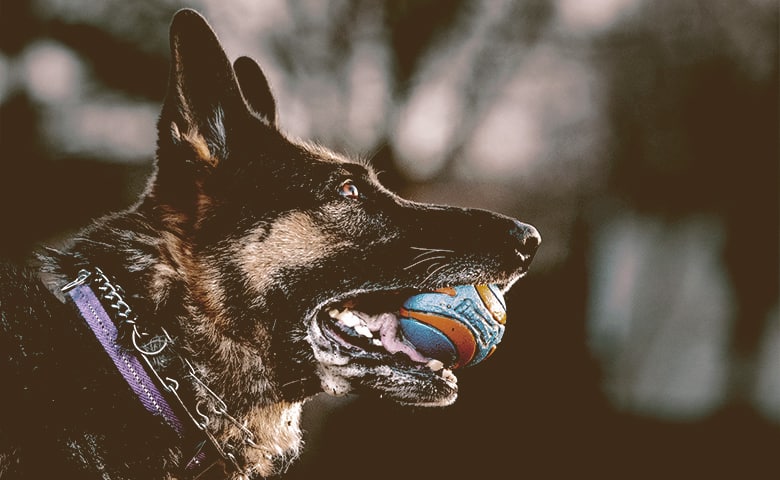
The bite force is the maximum pressure with which your dog can bite.
The strength of a dog might vary depending on the breed.
However, the situations that cause them to bite have a significant role in the level of force they apply.
For example, if the dog is biting a toy, it will not use the same level of bite force as if the dog is biting bones.
The bite force of dogs is between 230 and 400 PSI.
The pressure of a powerful dog’s bite can tear through the skin and crush bones.
For comparison, saltwater crocodiles have the strongest PSI among animals, with a 4,000 PSI.
It’s strong enough to grab a medium-sized animal and drag it into the river effortlessly.
With all this talk about the bite forces of animals, it may indicate that dogs can be dangerous.
However, you shouldn’t worry about the bite force of your dog.
As long as you care for them and train them well, they’ll be gentle with you, even with their playful biting.
How Is Bite Force Measured?
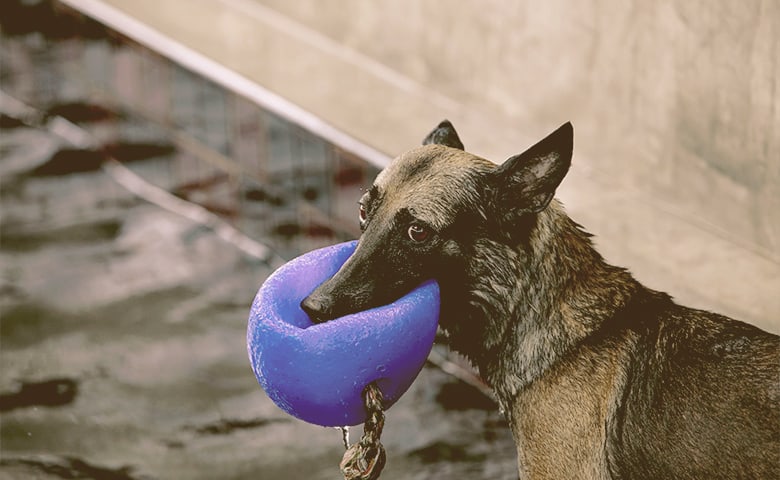
Bite force uses the PSI measuring unit. PSI stands for pounds per square inch.
It’s a measurement unit for estimating pressure at any point.
You can use PSI for more than only measuring biting force. PSI can also measure tire pressure and water management.
For a dog’s biting force, the amount of pressure applied varies on many factors.
The PSI usually depends on the dog’s breed, the object bitten, and the dog’s temperament.
Researchers use digital bite meters to determine the PSI.
The PSI is calculated by comparing the pressure of the bite to their breed, skull shape, and size.
Which Dogs Have the Strongest and Weakest Bite Force?
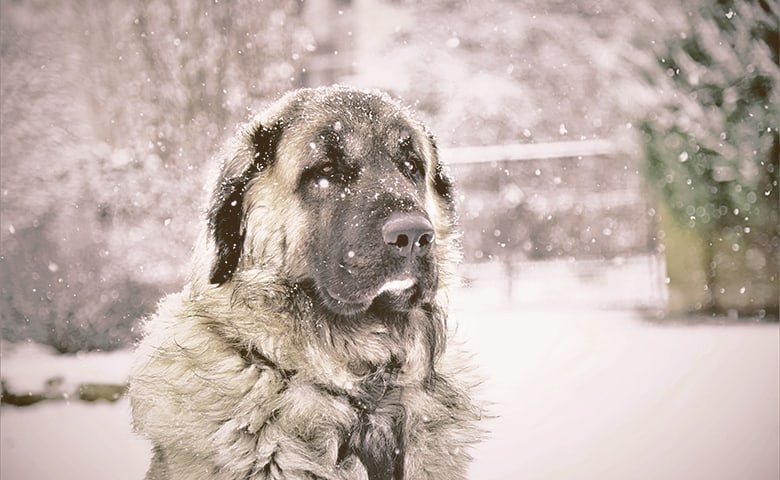
While some dogs have a powerful bite, others may have a weaker bite force.
Here are the weakest and strongest dog breeds.
The Weakest Bite Force
The Malinois, a shepherding dog, is a distant breed related to the German Shepherd.
Due to their resemblance to a German Shepherd, you can mistake them for one of the dogs with a high PSI. That, however, is not the case.
The Malinois biting force is 195 PSI, making them the breed with the weakest bite force.
Next in line is the English Bulldog. These canines are big, bulky, and intimidating in appearance.
They were once ferocious and helped hunters in the past.
The Bulldogs, nevertheless, are kind and amiable.
They tend to behave well in social environments.
Not only that, but they have a low bite force at 210 PSI which makes them not so dangerous.
The Strongest Bite Force
Kangal dogs are big and strong.
They were often trained to chase larger animals preying on-farm livestock.
In comparison to other dogs, Kangals have the strongest jaws.
The biting force of these dogs is 743 PSI.
Their biting force is somewhere between that of a great white shark (625 PSI) and that of a bear (975 PSI).
You may also want to read:
German Shepherd Dog Breed Information: All You Need To Know
What Triggers a German Shepherd to Bite?
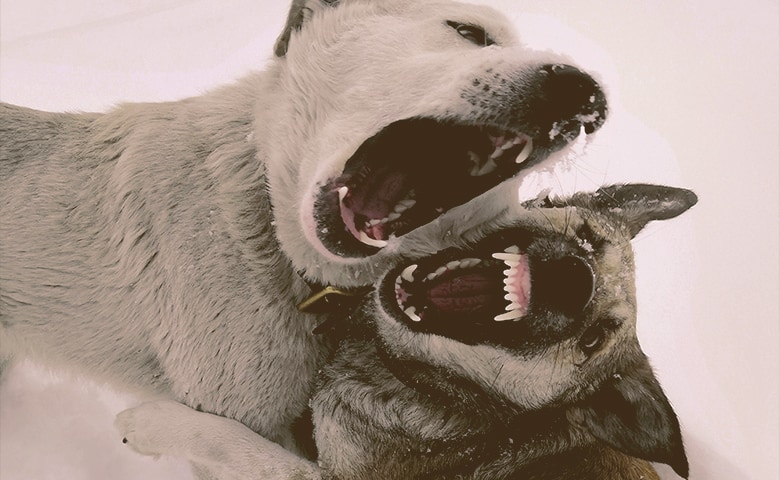
German shepherds are active, lively dogs who love spending time with their masters.
Because they’re a herding dog breed, they’re incredibly energetic and playful.
Even with their benevolence, they can bite.
However, a German Shepherd will attack only if there’s a reason.
A German Shepherd will bite if they’re feeling:
- Excited during playtime
- Frightened or threatened
- Protective of her puppies
- Protective of prized possession or their owners
- Injured or ill
- Disturbed while sleeping or eating
Due to a lack of training, your dog may exhibit social hostility.
Aggression can occur in dogs who don’t properly socialize with other dogs or humans.
As a result, it’s critical to keep your German Shepherd under control and train them well.
How to Avoid a German Shepherd Bite
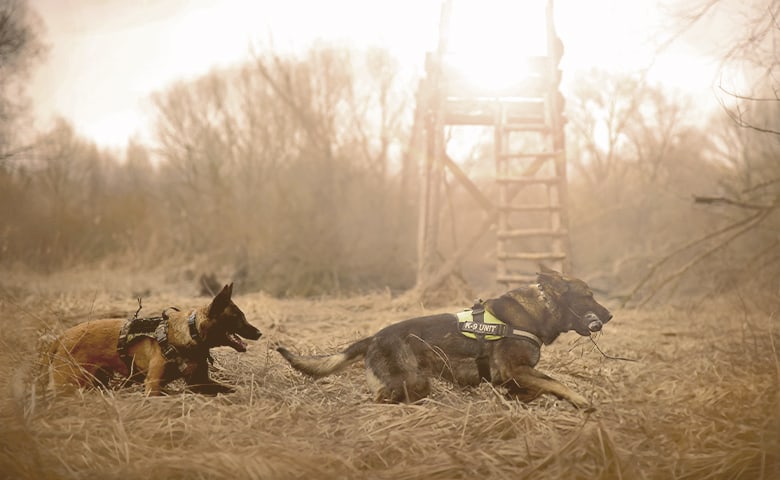
Since German Shepherds can be aggressive, there are ways to avoid aggressive behavior.
Once incorporated, you’ll find your dog becoming calmer.
1. Pay Attention to The Signs
It’s good to pay attention to your dog’s body language for hostile signs.
As previously said, there are indicators to look for to determine whether or not your dog is likely to bite you.
Remain calm if you observe any of these signs. Don’t scream and run away from the dog.
Any unexpected movement may elicit a bite from the German Shepherd.
2. Socializing Your German Shepherd
Socializing your dog allows him to feel more comfortable in different settings.
It’s essential for a dog’s healthy mental and social growth, so you should do it properly.
Socialization teaches your dog how to act in a safe and non-aggressive manner.
If socialization is done poorly, it might backfire. This can result in a dog that is too cautious or hostile.
Begin socializing your dog with people and other canines while still a puppy.
Additionally, while walking, let your dog wear a leash to ensure that you have control over him.
3. Avoid Triggering Situations
It’s essential to understand how to avoid triggering scenarios.
That way, you’ll learn when to engage with dogs.
Even if you’ve seen the dog before and he’s familiar with you, a bite may occur regardless.
Disturbing the dog when it’s eating or sleeping, as indicated above, may result in a dog bite.
If you find yourself in a potentially dangerous scenario, back away from the dog slowly.
You should also avoid direct eye contact because dogs use it to assert dominance.
4. Train Your German Shepherd
Training is essential for all dog breeds since it benefits you and your dog.
It boosts self-esteem, stimulates the mind, and deepens the human-animal relationship.
A dog trainer can assist you in determining what is triggering your dog’s hostility.
Once you know, a trainer will develop a plan to address the problem.
You’ll probably need to use positive reinforcement to teach your dog new behaviors.
Positive reinforcement training includes a reward, such as treats.
The anticipation for the reward will result in desirable behaviors from your dog.
Punishing your dog for aggressiveness always fails to work.
It could make the situation worse and make the dog more violent.
As a result, positive reinforcement is always the best option.
You may also want to read:
How to Train Dogs with Hand Signals
Summary
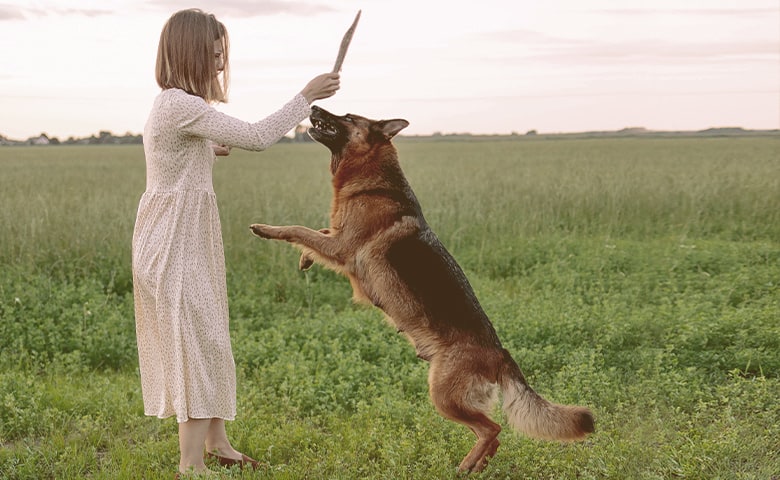
While German Shepherds can be good dogs, they can also bite.
A German Shepherd’s bite force is roughly 238 PSI.
Because of this, German Shepherd bites are among the most powerful dog bites.
A dog’s bite can be a caused by several factors, including injuries or being overly excited.
It’s better to watch out for signs of hostility and stay away from an enraged dog.
Despite their ferocity, German Shepherds are playful and loyal to their owners.
So make sure you train them well and give them many treats.

